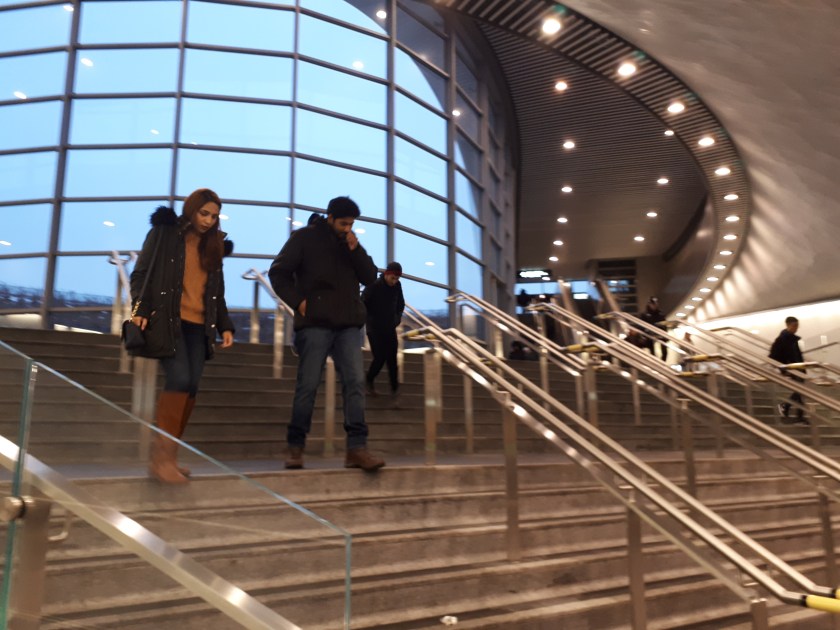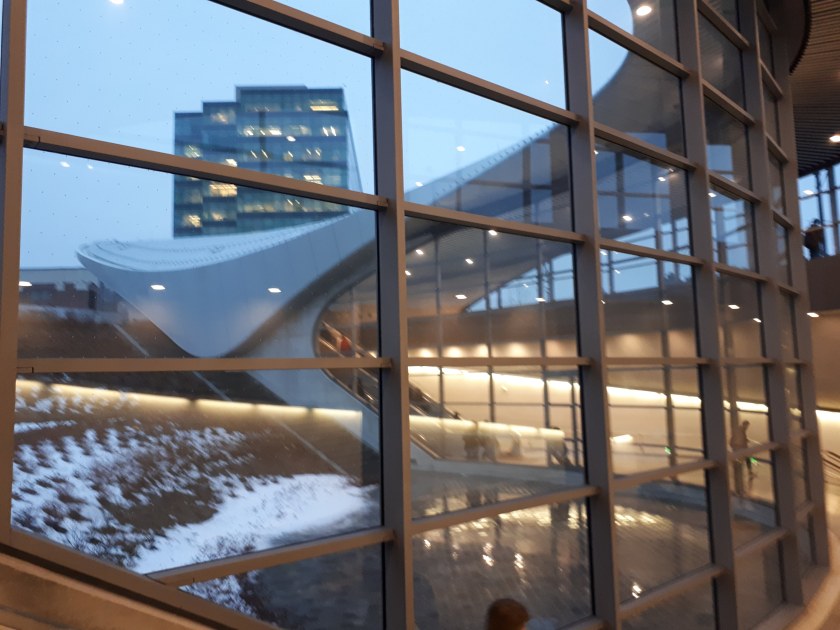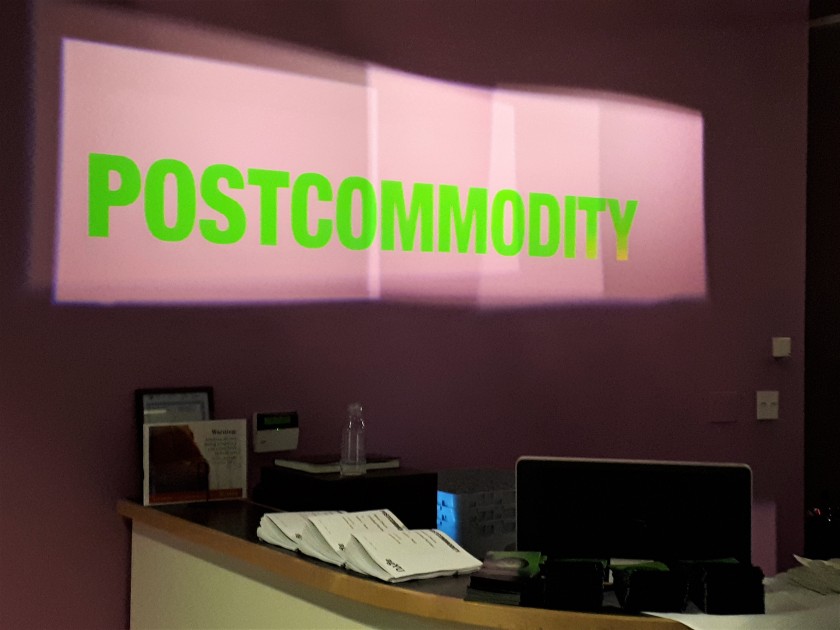York University Station
The exterior view of the brand new York University subway features a graceful, winglike swoop. It resembles a miniature Kennedy Airport and has the same lightness and fluidity as that iconic structure, which was designed by Eero Saarinen in 1962.

View of York University subway from AGYU on cold and rainy afternoon.
The new station, which is literally right across the street from the Art Gallery of York University (AGYU), was a collaborative design effort between Foster + Partners with Arup Canada. Seen from outside, the station has a lovely, rather modest scale. It’s when the rider descends, or ascends, that the station reveals majestic curves, plunging light sources, grandly sloping glass walls and dramatic stairways.



Making an entrance at the new York University subway station.
It’s capacious, filled with light and air and it is beautiful!
Apparently the vision for the new subway line started to take shape more than 30 years ago. What was happening way back then, in Toronto in the mid 1980s? One thing: getting to York University was a hassle.
Postcommodity at AGYU

Postcommodity at AGYU
Because I arrived early – whisked effortlessly upward, upward on the stunning new Line 1 extension – to AGYU, I was able to join the volunteers for the pre-opening stroll through the exhibition by Postcommodity.
Two of the artists who make up the collective were present, and they spoke about their work, explaining in particular the torturous relationships between the US Federal border patrols, the Mexican and Latin American migrants, and, the drug cartels, and how those relationships play out along the border. Surprisingly, the artists expressed a stoic optimism about the situation, viewing the land itself as infinitely more powerful than the various frontier guardians and extant border walls.
Video of installation by Postcommodity (similar installation is currently at AGYU)
Looking at the artwork however – and experiencing the audio component, which is a major element of the show – did not exactly inspire optimism but rather evoked sensations of disorientation, uncertainty and dread.

Artwork by Postcommodity
There is a lot of empty, dark space in the AGYU show. The central room is filled with sounds – whispers and incantations – that dart about, now on your shoulder and then across the room. There is a sole projected photograph, shown above.
The tour group was asked to think about the symbolism contained within this photograph. We viewed the horse carcass, unflinching dogs, fence, bleakness, neglect, loneliness, general ghastliness. (The horse as “symbol of colonialism” was mentioned but that, to me, is a stretch. The horse is a symbol of so many things.) We did not need to think about it too long. It’s immediately clear. This is a tough place to survive.
Below is another depiction, unrelated to the Postcommodity show at AGYU, of a border and hostile environment.

Approaching Canada US border at Emerson, Manitoba